SXSW '11 Review: Hesher
Though it’s been around since last year’s Sundance, Hesher is finally coming to theaters with its first push to the public here at SXSW. Good thing it’s coming now, because there was almost a shortage of Natalie Portman films in the pipe. It’s a pretty good film, though perhaps hard to describe. I’ll go with a cross between E.T, Little Miss Sunshine and One Flew Over the Cuckoo’s Nest. Which is to say it’s about a lost boy who meets a nutcase which changes his relationship with his father.
Hesher (Joseph Gordon-Levitt) is a badass squatter with a middle finger tattoo on his back who likes to blow shit up. When T.J. (Devin Brochu), a depressed middle-schooler with a propensity for incurring injury, accidentally loses Hesher a sweet hideout, the metal-head wanderer decides to squat in T.J.’S house with his father and grandmother.
After the death of his wife, T.J.’S father Paul (Rainn Wilson) falls into a debilitating depression which causes his mother (Piper Laurie) to move in and help out around the house. Hesher walks into this broken home not only for the free roof and food but also, apparently, to fix it. He is someone who knows broken families (it’s unclear how long he has been a homeless child) and makes it his mission to ensure T.J. Won’t go through life the same way he did. Of course, he’s rough around the edges so this all has to be inferred while he is setting fire to a bully’s car or tossing a cherry bomb at a cop car or sucking on a tall boy at a funeral.
Hesher is a complex role, and Joseph Gordon-Levitt takes on the task with everything he’s got. There is no reason to love him but somehow, Gordon-Levitt makes it possible. He keeps his eyes sympathetic even as he chortles through low-level terrorism. Also taking a nice dramatic turn is Rainn Wilson, who, just like his office co-star John Krasinkski did in Away We Go, dons a mighty beard, a sign of his darkness and adultness, to play Paul. He goes to great lengths to not be funny in Hesher, and it plays wonderfully. It’s doing exactly what he needs for his career: proving he has a range.
Also present is Natalie Portman, who hearkens back to her Garden State quirkiness as Nicole, the frumpy-hipster-hot grocery store clerk who serves as T.J.’s inappropriate love interest/muse. It’s a refreshing role for Portman. Unlike her starring role in The Other Woman she actually fits in Nicole’s shoes. It’s weird; she is a glamorous movie star and yet it’s the simpler, smaller roles that she fleshes out more successfully.
All told, Hesher is a very good film. Hesher himself is full of surprises; he’s a great character to watch unfurl, or come undone is a better way of putting it. The problem is in the ending. everything gets tied up predictably and, for lack of a better term, cutesy-wutesy. The last 15 minutes are no decent payoff for the characters we’ve gotten close to throughout the film. Slow-mo musical reveal? Yep, you betcha. Amer-indie cinema is a form all its own, and it’s getting stale with time.
SXSW '11 Review: Source Code
One of my best worst viewing experiences in recent years was when I saw Vantage Point at about 10am at an Upper East Side multiplex. Every time the story re-unfolded, the audience let loose a tortured groan. That film was terrible but the lesson was clear: telling the same story over and over again is not for the faint of heart; this is why Akira Kurosawa gets to be called a master for making Rashomon, or Harold Ramis for Groundhog Day.
Duncan Jones is no Kurosawa (or Ramis, for that matter), but his newest film, Source Code, is an enjoyable enough sci-fi thriller about a man reliving the same eight minutes over and over in order to solve a crime. Jake Gyllenhaal fills the role of Colter Stevens, a marine who wakes up strapped into a chair after experiencing a vivid simulation on a train. With only a female officer on a television screen to guide him (played by Vera Farmiga), he is both trying to solve the mystery of his own whereabouts as well as discover who bombed a Chicago-bound train that morning.
Using an experimental program called, unsurprisingly (and lamely, if you ask me), Source Code, military scientists have found a way to thread Stevens’s DNA with that of one of the victims of the attack. Jeffrey Wright plays the token holier-than-though-military-slash-mad-scientist who exposits the science behind Source Code. Without giving much away, the brain is capable of retaining roughly eight minutes worth of memory from the moments just before death. By mapping those 8 minutes onto Stevens’s brain, he can relive the experience of being on the train, thus being able to find the bomber.
Jones gives us a lot to swallow at once, and there is no question that his first priority was building a thoroughly fleshed out character for Gyllenhaal to settle into. He is at once a roughneck on a tear and a softie looking for love. It’s a lot of humanity for a man who can break another’s jaw in a single punch.
Unfortunately, Source Code’s weakest thread is as a thriller. The train sequences are built to draw the audience in and establish a familiarity with the space, but the premise is fodder for a brilliant whodunnit. So much time is spent trying to explain away Stevens’s situation that the bomb plot plays out a little too mathematically. This film is begging for more action and less explanation. To be fair, however, the bomb plot is a MacGuffin.
I will say that by the end of the film I was completely sold on the idea of the Source Code program. The concept has the makings of a nice little franchise, if not of movies than certainly of comic books. That, it must be said, is no small feat. Perhaps I’m clouded by the fact that Source Code is basically a mash-up of Unstoppable and Deja-Vu, but part of me wishes Duncan Jones had taken some action lessons from Tony Scott. The emotional arc is finely tuned, but as an action film overall it falls short of thrilling.
the candler blog is new again (again, UPDATED)
You’re looking at the third iteration of the candler blog. For those who have never been here before, welcome; to those who have come and gone over the years, welcome again. A lot has changed since I [started the candler blog two years ago](http://www.candlerblog.com/2009/03/23/welcome-to-the-candler- blog/). I’d like to fill you in and let you know where I see things going in the future, as well as explain the choices behind this new design.
Still Candling, But Where?
Almost exactly one year ago, I attended an Oscar party thrown by Heeb Magazine. I met one of their editors and let slip that I was headed to SXSW, a trip paid out of pocket to cover for the candler blog. “You’re headed to South-by? Great, wanna get us 3 reviews? Cool.” And that was it. Without any idea of how to deliver on the request (what films, how long, deadline?) I became a writer for Heeb.
I continued to contribute through the summer until the print magazine officially folded. When Heeb moved online only in August, it was announced that I would be the new Arts Editor, and I have fulfilled that role ever since. The main reason I have written less on the candler blog is because of my time taken up at Heeb. I also contribute regularly at Toro Magazine and NachosNY. For a while, I was writing a few DVD reviews at the GreenCine Guru blog, but I haven’t contributed one in quite some time.
My top priority with the new design was finding a way to make all of the other content I publish elsewhere could find a home on the candler blog. Also, there are a number of posts that others write which would be of interest to the candler audience, but I’ve never had a way to quickly link to those pieces here. Now, I can.
Think Out with your Link Out (UPDATED 3-22-11)
I’m taking a cue from John Gruber’s Daring Fireball (and the many who have taken the cue from him) and making some of my links lead to places other than the candler blog. Any time you see a right-facing double arrow (⇒) at the end of a post headline, either on the site or in the RSS feed, clicking the headline will send you out to another site. I imagine this will usually be used for my own work on other sites, but I will also try to curate some links and offer my own opinion.
With this move came the decision to remove ads from the site, at least for now. I never liked the way my ads looked and they never did much but get in the way. The most important thing now is content, and I don’t want anything to get in the way of it. Will there be ads on the candler blog again one day? Who knows.
Grid vs. Ego
The new site design is based on Tom O’Doherty’s Extricate Wordpress theme. I knew I wanted to get something griddy for the new design and Extricate fits the bill beautifully. It’s important to me that the actual text be allowed to shine with the new design. I encourage readers to use services like Readability or Instapaper to take candler blog content with them and format to their heart’s content. I’ve added Readability’s button to all of my posts so that readers can reformat the text as they please. It’s free to use live on the site, and if you’re a Readability subscriber then clicking “Read Later” will put a bit of money in my pocket. This is the way I prefer to read and I’m sure others do too. Of course, if you want to stay on the site, I think the text looks beautiful as it is.
I’m going to use images less, and instead keep either a poster or a small photo of a film to the left of the content. Images have never looked that good in the RSS feed, an issue that could of course be corrected through some coding. However, I really want to focus on the written content on the site, and some parity between what you get here and what you get in the feed is a good thing in my opinion.
It Never Ends/Just You?
The redesign is ongoing, and given that this is my third major redesign in 2 years, you can guess that another may be around the corner. Who knows? Not me.
Speaking of me…for a long time I’ve purported egalitarian approach to the candler blog. The plan was to build an outlet where anyone could contribute. That didn’t pan out, though there has been one regular contributor alongside myself, Sunrise Tippeconnie. He is sticking around and others are encouraged to contribute, but at this point there’s no use hiding the fact that I’m in control of the backend.
So that’s about it. I’d love to hear what you think of the new design in the comments. Please come back early and often to see what’s happening at the candler blog.
Dispatches from Clermont-Ferrand: French Program 1
The first program of the French selections implied a strong programming subtext of dark thematic trauma. The initial short Nuisible(s) was light in tone through its fantastic miniature world, where empty pizza boxes provide home to a tiny ant-like society and the danger of potential chaos comes when a giant teenager’s bedroom is on the verge of a cleaning overhaul, pizza and ants included.
Self taught Sri Lankan filmmaker Pradeepan Raveendran’s Shadows of Silence initiated the program’s tone with an exploration of the isolation and depression held within by a suicidal father of three through some great shifts in time/space. We observe visions of his dead body along the sidewalk of snow in a manner that electronically calls out like voices from beyond. While initially very slow in tone and pace, the shock of seeing death soon turns banal, emphasizing the dread that death is also perhaps a trap of the quotidian to be escaped.
The initial crowd murmur that occurred upon the possible attendance of New- Wave-ressurection-associated Louis Garrell was not fulfilled with his presence as a filmmaker in this screening, but his film Petit Tailluer collapsed the gap of expectations and excitement. And while the narrative could be clearer in terms of point of view and setup of protagonist motivation, Garrell’s most successful contribution is providing Lea Seydoux the opportunity to shine beyond the roles in which she is normally relegated (ie, love interest to be conquered in Ridley Scott’s Robin Hood). And while she was not the main protagonist (although it might have been a stronger choice) her character and performance choices were an exciting emergence to observe.
The program concluded with three more narrative works that solidified a growing ascension in tone, including a great juxtaposition of playful animation and the psychological consequences in an personal docu-animation about statutory rape in Francoise, and an interesting allegory of the loss of Muslim conviction in Siggil by Remi Mazet, which was confident in style and technique but unfortunately lost audiences in terms of depicting taboos about dogs as bringers of darkness.
Dispatches from Clermont-Ferrand: Opening
This week is the Clermont-Ferrand International Short Film Fiestival in Clermont-Ferrand, France. Sunrise Tippeconnie is there devoring as many films as he can and sharing them with us here. Check back for more throughout the week.
The 23rd Clermont-Ferrand International Short Film Festival opened with some
amazing works that represented various aspects of the programming and
displayed a talent for the eclectic and historically overlooked. The very
first work, This is New Zealand by Hugh MacDonald for the New Zealand
National Film Unit represented a retrospective of New Zealand through
incredible photography that crossed a tri-sected screen reminiscent of and
rivaling Fleisher’s The Boston Strangler. Incredible juxtapositions occurred
as a result of photographic/montage kinetics, but also through amazing
contrasts of truths and stereotypes of the country; particularly strong in the
tongue-in-cheek moments of grazing sheep and the rural farmers. An amazing
find that conveys New Zealand’s strengths in its traditions of documentary,
despite its recent need to depart from it in the strong narrative works of
Taika Waititi and Mark Albiston, who are both represented by other shorts in
this section of the fest.
New Yorker Keith Bearden presented a short from his realm as Lab Competition selector, Raymond by Bif which combines the mixture of digi-alchemy and comedy when a test subject is given a test liquid that makes him float, bounce and contort in various manners, as if a resolve to circumvent any personal intention of his own. The hilarious nature of the physical comedy should not diffuse the experimental nature of the film’s plastics that collapse the bridge between the more antiquated forms of analog and the overly-pixeliated nature of contemporary formats. Thus, it is an allegory to contemporary technology and medical research that overlooks the humanity of its subjects.
Also included in the presentation were two retrospective animation works, “Ego Zhena Kouritsa” from jurist Igor Kovalyov (creator of Rugrats and Duckman) which displays his more avant-garde approach, and the infamous Tex Avery short Red Hot Riding Hood. Both instilled a general excitment, not just because of their rare celluloid presentation, but their intelligent use and approach towards animation’s malleability as a means to demonstrate the physical world’s melding with the emotional and emotionally abstract.
Two other shorts that were more playful in their experimental nature were Comme Un Drapeau Dechu, in which director Samuel Domingo Cervera plays with hesitant homage to the great Jean-Luc Godard where the landscape of Paris cannot escape the need for New Wave capture and definitions, so much so that the filmmaker’s voice over questions the legitimacy of his intentions as well as the outcome’s similarity to refuse through repetition. Davd Russo, on the other hand, uplifts this psuedo-doc genre when he depicts his own journey through depcting his own defense against funders in voice over as we view a more poetic rendering of investor money spent — the capture of crowds in an arts festival to convey the collective nature of the medium as time lapse merges crowds en-masse with hand-drawn animation where they two cannot exist in this film, nor festival, without each other. The hesitancy of the investors, in voice over, do not triumph over the filmmaker’s convincing defense of the collective aesthetics, despite the truth in his title I Am (Not) Van Gogh.
The evening ended with a film/remix of Disney’s Snow White by DJ/filmmaker Pogo, which further illustrates the accepting nature of the festival, despite other world-wide hesitancies toward the digital, the internet and the continued compression of governmental nuturing of the medium.
Review: The Other Woman
Don Roos’ The Other Woman opens with the thumping beat of The Flaming Lips’ “Do You Realize?”, a song that serves both as an on the nose explication of the film to come and a warning to those who watch. “You realize that life goes fast/It’s hard to make the good things last…” In other words, get out while you still can.
At its core, The Other Woman is a sappy melodrama, a fact apparently lost on Mr. Roos. For at least half of the film’s duration, he seems to think he is making a romantic comedy. The romance is lackluster and the comedy is nigh non-existent.
The film follows Emilia, played by Natalie Portman, a full grown woman-child who lands a job as an associate at a non-descript New York lawfirm. After a chance encounter (thanks to some out-of-place slapstick) with one of the firm’s brooding partner’s, Jack (Scott Cohen), Emilia falls head over heels in love and spends a good ten minutes pining for him. Then, he assigns her to some busy work in another town, they share hotel rooms, and the wheels are in motion for her to become “the other woman” who breaks up Jack’s marriage. At the film’s open, they are married and have lost a child not even a week old.
Portman, who also served as executive producer on the project, has trouble filling out the role of a young Manhattanite who married for money. There is something awkward about her essence in this film; the way she walks, the way she peers around the frame. The actress, not the character, feels like a fish out of water. To be fair, the script is desperately wooden, featuring expository blurts throughout. Perhaps her source material didn’t offer enough guidance, but at the very least I presume a movie star could walk around in high-heel boots without looking like she’ll topple at any moment. Emilia can not.
I can put all of that aside, however. If The Other Woman is a classical melodrama, it is a weak one at best. The conflict takes too long to appear, the main character isn’t sympathetic and the obstacles to happiness are too easily overcome. Emilia is weak both as a character and as a woman. There are reveals galore (how, why, when did her baby die?) but no one learns anything. The hero mustn’t always get her way (in this idyllic case, she does) but she should have a better understanding of her inner self after the journey of the film. By the end, Emilia is poised to make all of the same mistakes again. Here’s to the depressing sequel.
Don't Worry About Final Cut
Ever since Monday’s announcement that Steve Jobs will be taking an indefinite medical leave from Apple, it feels like every outlet on the planet has tried to find a way to spin a story out of the titan’s personal affairs. Speculation about his prognosis, figuring how this will effect the stock price and, of course, what this bodes for Apple’s product line.
In a word, it’s all horseshit.
Today, I feel Variety has crossed a line (or [via Instapaper](http:/ /www.instapaper.com/text?u=http%3A%2F%2Fwww.variety.com%2Farticle%2FVR11180304 82%3Fcategoryid%3D1009%26cs%3D1%26nid%3D2562%26utm_source%3Dfeedburner%26utm_m edium%3Dfeed%26utm_campaign%3DFeed%253A%2Bvariety%252Fheadlines%2B%2528Variety %2B-%2BLatest%2BNews%2529)) into territory I feel like I can address, so I’d like to call them on the carpet. In a throwaway piece which appears online this morning, no doubt in a sidebar in print, they haphazardly speculate that Jobs’ condition could have implications for Final Cut Pro. Here’s the opening sentence of the piece:
Monday’s news that Apple topper Steve Jobs is taking medical leave is sure to prompt speculation about Apple’s commitment to Final Cut.
The whole thing tops out at 97 words. It’s not a scoop; it’s stirring the pot and filling up the page. Moreover, the whole idea seems to be the brainchild of someone who doesn’t know anything about Apple, post production or the movie industry. That’s three pretty big fails for Variety. Here are some clues as to why this is a load:
- Final Cut is pervasive, but it’s far from the only game in town. A trade paper like Variety doesn’t seem to have any business worrying about this. 2. Jobs has never been seen, at least not since Apple’s acquisition of Final Cut in 1998, as a guru of all things FCP. In fact, the application runs counter to almost all of the software advances Apple has made over the last decade, retaining roughly the same design since 1999. 3. If there is to be a new Final Cut coming out this year (and I do believe there is) then the major changes are already complete. It’s doubtful that Jobs was fine-tuning the program with the development team this late in the game. If there is hay to make from Jobs’ departure, it’s that the 2013 release of FCP could be called into question, but certainly not anything coming out this year. I feel very strongly that Final Cut Pro is the best editing application for me, and I hope that in its future Apple will bring us into a new age of streamlined editing. In his tenure as CEO of Apple, Steve Jobs has changed the way the world looks at technology. From the Mac to the iPod to the iPad to the iPhone, he has helped invent more products that affect the lives of millions than most can ever hope. Nonetheless, Final Cut is safe without him, and it’s downright inappropriate to suggest otherwise. Shame on you, Variety.
Watching The King's Speech in a Room Full of Actors
Last night, I attended a screening of Tom Hooper’s The King’s Speech at the Ziegfeld Theater in New York. After the film, Mr. Hooper, Claire Bloom, Jennifer Ehle and Colin Firth were all on hand for a Q&A session moderated by Elvis Mitchell. I was able to go because, besides being a film journo of sorts, I am also on the mailing list of an organization called Below the Line, which offers cinema perks to lower-rung film industry workers. (I work in post production when I’m not writing about films.)
The BTL screenings I’ve been to before have been pretty small and generally cozy. I was curious how this little known group could fill up the palatial Ziegfeld. Apparently, this screening was mostly for card carrying members of the Screen Actors Guild. SAG filled up the bulk of the seats, while the BTL gang filled in the gaps.
I work in the film industry and I see it from many different angles. Anyone who has the mettle to eek out a living in this business is okay by me. There is very little glamour going around; we all have to eat. But there is something about a room full of actors that amplifies a number of stereotypes about them. A silliness, a vacuousness. When the lights went down and the film came up, I found almost immediately that I chose the worst possible film to see surrounded with this lot.
The King’s Speech not only features a handful of great performances, but it is about performance itself. This is emphasized immediately; the film opens with a broadcaster readying his vocal chords by gargling and mumbling tongue twisters in front of a massive microphone. The process, it seems, is the thing. Very quickly, scarlet walled theater felt like a corporate event, say, a lawyer convention with a comic announcing “a good start!” up on stage.
It felt like when, in Funny People, James Taylor calls out to a crowd of Myspace employees “Fuck Facebook!” There is a moment in The King’s Speech when Michael Gambon, as King George V, sets up a joke that with the advent of radio the King is becoming something far worse than a mere figurehead, he was becoming an actor. The crowd ate this up, laughing long enough to stomp on a few lines. Some, it seemed, tried to outdo one another with louder laughter, some hand claps, going big with the reaction. The joke, it seems, was on them.
The worst, and I have been kind up until now, came when Elvis Mitchell opened up to the audience for questions after warming up the talent on stage. Public Q & A sessions are an audience draw, but handing the mic out at random can be a dreadful experience, you never know who you’re going to get. The person who shot his hand up first was sitting in the front row, so Elvis trotted the mic over to him. As is often the case, the man opened not with a question, but with a lengthy pronouncement. This, unquestionably, was the worst one I’ve heard yet, and the speaker should be embarrassed and ashamed of himself:
“First of all, to Colin Firth, great great work. That was such an amazing performance. you’ve made my decision very easy when it comes time to vote for the SAG best male performance. Also, I’ve worked with you before and I noticed how nice to me you were and I thought ‘Why is he being so nice to me? I’m just a nobody.’ but you really were. Just great. But my question…Oh! And Tom Hooper, great direction, really really wonderful. I hope we get to work together someday soon.”
To his credit, at that moment, with the crowd releasing an agonizing grown, Elvis Mitchell made a motion to grab for the microphone. He almost took it back and made it clear to this character that he’d better stop grovelling for work and ask a question. And so he asked about how Colin Firth prepared for the role. And so did the next person. And so did the person after that.
What’s annoying is that on the first go, Colin roundly answered the question of how he played a stammering king. he explained how he was interested in Prince Albert’s life as a conflicted man, and noted that the internal struggle of any man is no different no matter the time period. (He also caddishly mentioned that he has some experience playing British gentry.) If you ask me, this is golden advice to budding actors, but they all seemed so obsessed with the plasticity of his performance. “How did you learn to stammer?” The brilliance of Firth’s performance is not that he figured out how to stammer, but that he gave voice to a man through the stammer. There is no question of Bertie’s (as he goes by in the film) strength as a leader, and yet his most important duty, to speak to his people at a time of war, is nigh impossible given his vocal flaw. To balance such raw power with open vulnerability is extremely difficult. To stammer, not so much.
All told, I enjoyed the film even if the crowd was a bit goofy. Not all actors make for a bad audience. The ones on stage, for example, seemed to be fine company indeed.
The Sunrise 12 of '10
It should be noted that this list was meant to be called “Sunrise’s Most Inspiring Films of 2010”, but if you would like to look at this as a “best of” list, then that’s okay too. On with the films.
Altamont Now (Joshua von Brown)
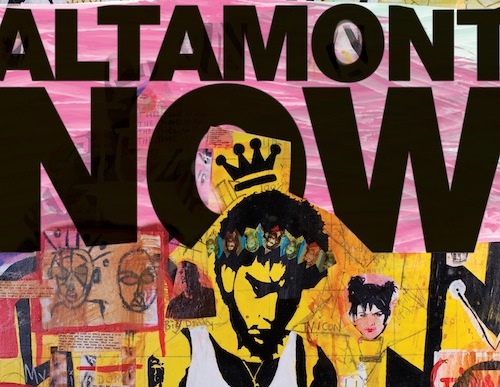
Altamont Now
While on an initial viewing the limits of the dialog and performance dominate, the feel of immediate deconstruction and analysis inherent in contemporary punk aesthetic comes to the forefront as the work’s strength. Screaming with energy and an intelligent sorting through the problems of action in contemporary counter-culture Altamont Now’s smartly delineates a movement’s disintegration through a mocking use of the medium itself to pose the question of any mediation as a legitimate for of contemporary “culture.”
The Anchorage (C.W. Winter & Anders Edstrom)

The Anchorage Film Still
It is precisely the quiet and perhaps “bare” nature of this fiction/non- fictive hybrid that allows for a simple return to cinema basics. Without the hindrance of narrative’s contrived relationship with cinema, Winter and Anders have found a contemplative observation of the quotidian rituals of Edstrom’s mother that hint at the normalcy and perhaps banality of the spiritual. While the 16mm cinematography feels cleansing in it’s earthy tactility, it becomes fascinatingly apparent were are also observing Cinema think through the necessity and purpose of Story; quite an undertaking for a first feature.
The Eclipse (Conor McPherson)
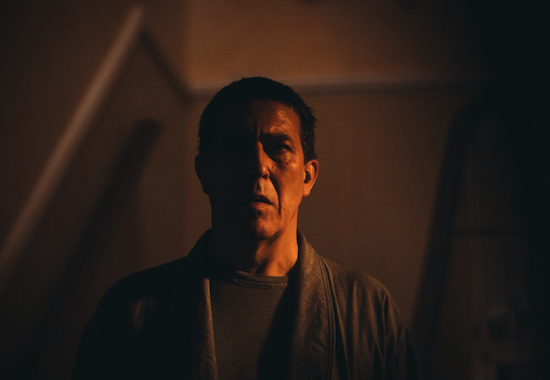
The Eclipse Still
McPherson’s dramatic rendering of a writer haunted by the memory and emotions of his deceased wife pushes through the conventions of a ghost story to focus on the fragility of human emotions during such nebulous mental states. Overcoming the fear of unknowns, that are primarily psychological and emotional, further grounds the genre into horror-realism in a manner similar to Hans-Christian Schmid’s story of demonic possession in Requiem.
The Girl on the Train (Andre Techine)

The Girl on the Train
Techine’s narrative mastery evokes intelligent questions about the self- ascribed identity and relationships of a young digital native who’s contemporary thought processes dismisses consequences. As a brief lie comes to a dramatic head, her actions reveal complicated ambiguities that her digital- immediacy cannot escape as she recognizes the endangered concept of responsibility.
I Am Love (Luca Guadagnino)

I Am Love
Elusive in its structure due to the passion that excites the use of every frame, Giadagnino vigorously captures the electricity about life (as well as the fragility of such emotionally charged energy) in a manner seamlessly in- tune with its subject matter that it seems Giadagnino’s naturally composed of cinema himself. It will be quite exciting to see how he grows into further fictional work.
Kisses (Lance Daly)
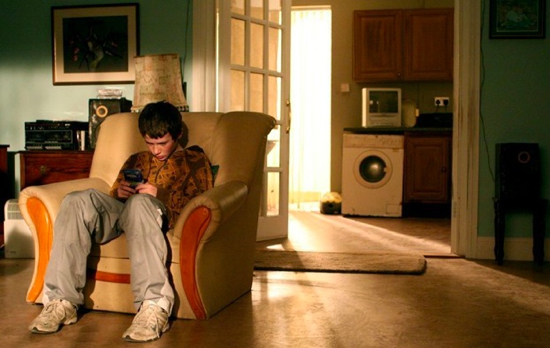
Kisses
Daly’s reliance upon an impressionism over narrative appropriately captures the threats that adult logic and thinking imposes upon a child’s emotionally rejuvenating imaginings and observations. While two young kids run away from home, their ability to out dodge adults becomes a metaphor of escapism from the oppressive customs of global-market capitalism. Daly’s allowance of a meandering camera captures this fleeting essence inherent in the young that embrace an innocent excitement about the world that has not been so gracefully depicted since the likes of Lynn Ramsay. Daly lingers on what we dare to cinematically link to nostalgia before it really becomes underwhelmed in comparison with the contemporary delights of the digital.
No Easy Decision (Morgan J. Freeman) [[Watch the Film]](http://www.mtv.com/videos/no-easy-decision- special/1654990/playlist.jhtml)

No Easy Decision
While footage remains tame, MTV’s one-time airing of the thought and emotive processes (rather than practical and physical documentations) of Markai Durham’s underage abortion choice has brought forth a dominant discussion in a manner that seems timely by mediated standards, yet late in terms of home- politics discussion. Drew Pinski leads discussion that is reminding of a time when AIDS was an under-discussed because of fear and limited knowledge. Not “vivid” enough for some and blasphemy for others, the controversial episode’s intelligent purpose of discussion is clearly visible upon the MTV website, where young audience members are discussing and messaging over this issue that will come to dominate their future elections.
Paper Covers Rock (Joe Maggio)
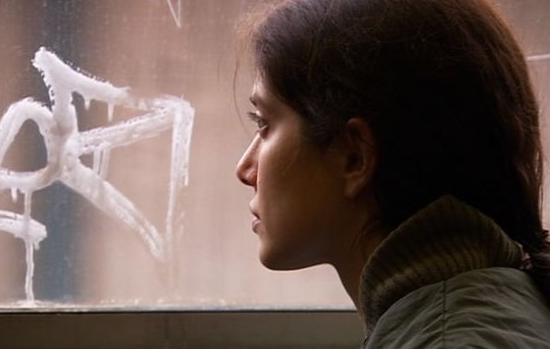
Paper Covers Rock
What at first feels like a trite DIY-verite becomes quite intriguing through it’s sensitive character analysis and possibly unintentional Mumble-genre self-analysis. Jeannine Kaspar’s incredible performance depicts the achievement of a depression-ridden Sam to find a means to recognize one’s responsibility to those outside of one’s own body/mind that also metaphorically transcends the critical resistance against “mumble” works to find a movement towards a more matured DIY POV.
Please Give (Nicole Holofcener)
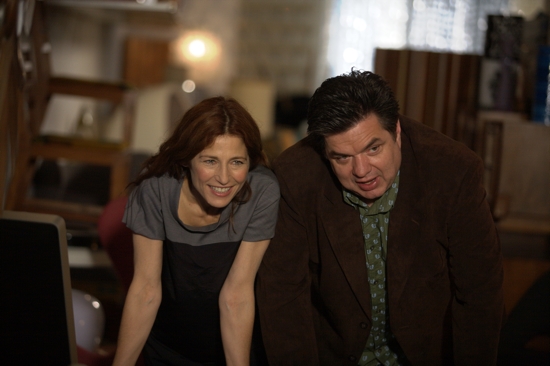
Please Give
Holofcener once again astonishes in her abilities to connect the dots about the contemporary world, in which we associated non-relevance with death and the bravery that must be evoked to over hurdle through emotional non-relevance to find mature relationships. Holofcener’s witty dialog compliment a poetic, yet piercingly real depictions of the contemporary American neurosis that is neatly holding her place as a possible Woody Allen successor.
Princess of Mars (Mark Atkins)
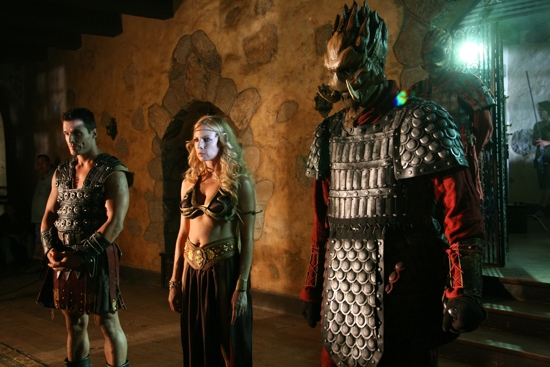
Princess of Mars
Direct-to-DVD sci-fi cult distributor The Asylum’s prolific director of photography / director Mark Atkins has finally found a work that caters to his bizarrely illogical narrative jumps and campy performance styles in a recent drafting of E.R. Burroughs. I can only marvel and admire Atkin’s abilities to create a coherent work that works on the level of 60s sci-fi cultish fun and contemporary war-subtext (although quite conservative in tone) in under twelve days of shooting. Arkin’s auteur-istic tendencies (in the comparison with someone like Lucio Fulci or William Castle) should not be over looked despite it’s quality, especially in today’s cinematic landscape overtaken by ‘Fincher’s and ‘Anderson’s.
The Social Network (David Fincher)
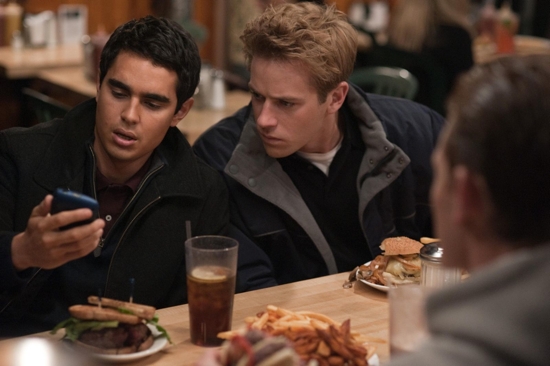
The Social Network
Still amazingly brilliant in statement, just as much as in his deceptively subtle execution, Fincher continues to push his cinematic mastery into realms that rival those he’s studied and admires sooner than most expected. For further discussion, see [my candler blog article](http://www.candlerblog.com/2010/11/23/intriguing-possibilities-not- so-accidental-network/).
Tik Tok – Ke$ha Parody (thecomputernerd01) [Watch the Film]

Tik Tok Ke$ha Parody
While computernerd01’s intention seems to be a simple parody of pop-star Ke$ha’s Tik Tok,, the manner of execution amazingly works on multiple levels of abstraction and analysis of pop culture vacancy. Similar in ambition and energy as XsamiSDx’s video , which glamourizes and epitomizes the empty limits of the “pop” codified, what thecomputernerd01 has been able to identify is how the ease of commercial concepts of product are easily interchangeable between different companies, since their value is the same regardless of product. There is as much meaning behind Peter Griffin as there is behind Ke$sha’s lyrics. The logic of computernerd01’s lyrics convey this dis-associative reality behind the absurdist tendencies of consumer internet-linkage as contemporary rational logic or works cited, where drinking Sprite is the same as Coca Cola and the logic of punching Captain Crunch is perfectly possible.
Review: Black Swan
It takes almost no time to demystify Darren Aronofsky’s Black Swan, which is a real shame because its slight of hand is most of what it has going for it. I spent most of its duration guessing where it could be headed besides the obvious, but I was left sorely disappointed by the end. Aronofsky has made a striking film that will certainly incite discussion if only for his referential technique (Deren’s Meshes of the Afternoon, Polanski’s Repulsion, Argento’s Suspiria, and there’s probably more), but ultimately it is empty, lacking the elements it so desperately tries to evoke, namely sexuality, musicality and brutality.
Black Swan is the story of Nina Sayers, a virginic dancer with a New York ballet company played by Natalie Portman. When she gets the lead spot in a new production of Tchaikovsky’s Swan Lake, she must grapple with her rigidity in order to fulfill darker side of her character’s dance. As the white swan, she is a perfect fit given her tightly wound prissiness; it is the black swan transformation that she has trouble with. Nina must access her dark side, her pent up sexuality, in order to succeed.
Swan Lake’s narrative, it is made clear, parallels Nina’s, a conceit that
becomes annoyingly obvious once Mila Kunis shows up as Lily, a wild,
disorganized and passionate dancer who wears exclusively black apparel
(shocker). The effect plays about well as in Twister where the baddies drove
black SUVs while the good guys towed around in white, which is to say it plays
predictably.
Aronofsky’s lack of a funny bone severely brings this film down. There are laughs, but they appear by mistake. Two big ones break up masturbation sequences (yep, plural). It’s not as much that the director should be bringing proper laughs to this sort of a film, but if he had a clue about comedy he could have avoided these awkward truncations. Moreover, if this film is missing anything it’s a comedic self-awareness. So much energy is spent hiding the mysterious, the phantasmagoric elements of the film that the human element is never allowed to shine through.
When it comes to sex, Aronofsky seems to approach the topic too literally. Just having two hot young actresses go at it does not make the film sexy. The much ballyhooed lesbian scene plays mechanically, straightforward; not erotic. There is a romance to the camera, to the editing that Aronofsky is missing. The filmmaker is not making love with the tools he has at hand so the passion falls flat. This doesn’t just go for the sex, either.
As a dance film, Black Swan is second rate. There is some inspired closeup photography of Portman’s feet, plié-ing and pas de deux-ing all over the place, and there are definitely a few wonderful sequences including Nina’s final attempt at becoming the black swan. However, overall, Aronofsky treats dance less as art and more as sport. Focusing on the feet of a ballet dancer basically misses the forrest for the trees. Mao’s Last Dancer from earlier this year had an atrocious narrative but at least its dance numbers were impeccably executed. Aronofsky focuses on his gritty flourishes so much so that we miss the point of the dance, which ultimately brings the story down. If we never see why Nina loves to dance (but we do hear her say it) then why should we follow the plot at all?
I’ll admit, I’m being a bit hard on this film, but I feel very strongly that its shortcomings outweigh its successes. What it gets right are the cinematic equivalent of parlor tricks, which is a grave frustration given how good this film wants to be. When you remove the film’s plasticity, you are left with nothing much at all but a 135 year old Russian ballet. I’d rather go see it at Lincoln Center myself.